
ArchiSquad.in
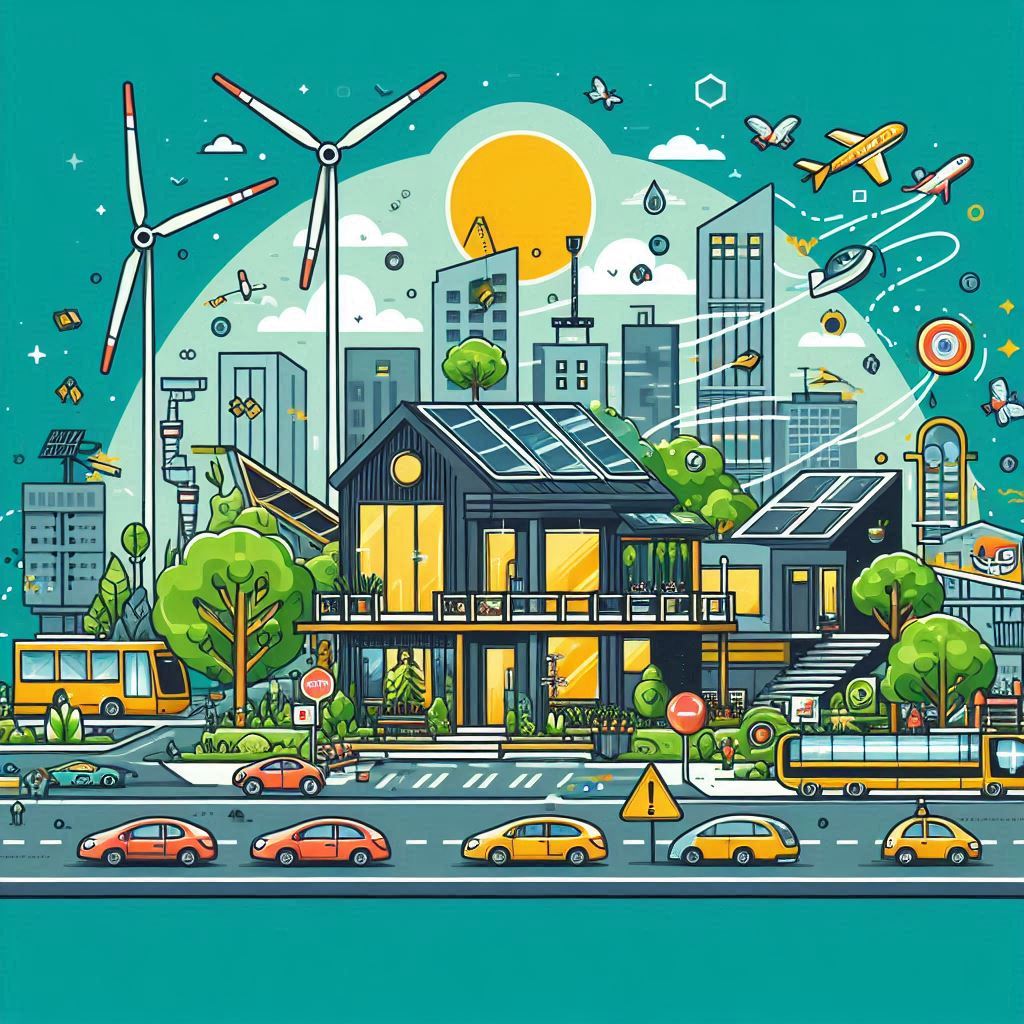

20 topics to craft a winning sustainable architecture thesis
In today’s rapidly evolving world, the need for sustainable architecture thesis has never been more critical. As global warming and environmental degradation continue to pose significant challenges, the architectural community must step up to create innovative, eco-friendly solutions. For students pursuing a degree in architecture, crafting a thesis on sustainable architecture not only showcases their academic prowess but also contributes to the broader goal of a sustainable future. This blog post aims to guide you through the essential steps and considerations in developing a compelling sustainable architecture thesis.
Understanding Sustainable Architecture
Sustainable architecture refers to designing and constructing buildings that minimize environmental impact, optimize energy efficiency, and utilize renewable resources. It encompasses various practices, including the use of sustainable materials, energy-efficient building systems, and designs that reduce waste and carbon footprints. As an architectural thesis topic, it offers a vast and dynamic field to explore.
Choosing a Sustainable architecture Thesis Topic
Selecting a specific and engaging thesis topic is crucial. Here are some ideas to get you started:
- Net-Zero Energy Buildings : Investigate the design and implementation of buildings that produce as much energy as they consume.
- Green Roofs and Walls : Explore the benefits and challenges of integrating green roofs and walls into urban architecture.
- Passive Solar Design : Analyze the effectiveness of passive solar design strategies in various climates.
- Sustainable Urban Planning : Examine the principles and practices of sustainable urban planning in reducing environmental impact.
- Biophilic Design : Study the impact of incorporating natural elements into building design on human health and well-being.
Conducting Thorough Research
Once you have chosen your topic, the next step is to conduct comprehensive research. Utilize academic journals, books, case studies, and credible online resources. Key areas to focus on include:
- Current Trends : Stay updated with the latest trends and innovations in sustainable architecture.
- Case Studies : Analyze successful sustainable architecture projects to understand practical applications and outcomes.
- Technological Advances : Investigate new technologies and materials that enhance sustainability in architecture.
Developing a Strong Thesis Statement
A well-crafted thesis statement is the cornerstone of a compelling sustainable architecture thesis. It serves as the central argument or claim that guides your research and writing. To develop a strong thesis statement, consider the following key elements while maintaining an optimal keyword density for SEO purposes:
Clarity and Precision
Your thesis statement should be clear and precise, leaving no room for ambiguity. It must succinctly convey the primary focus of your research on sustainable architecture. Avoid vague language and ensure that your statement directly addresses the specific aspect of sustainability you are investigating.
Example: “This thesis explores the impact of passive solar design in reducing energy consumption in residential buildings in temperate climates.”
Relevance and Significance
Emphasize the relevance and significance of your research within the broader context of sustainable architecture. Highlight why your chosen topic matters and its potential implications for the field. This not only adds weight to your thesis but also helps capture the interest of readers and evaluators.
Example: “By examining the effectiveness of green roofs in urban settings, this thesis aims to demonstrate their potential to reduce urban heat island effects and improve air quality.”
Specificity
A specific thesis statement narrows down the focus of your research, making it more manageable and impactful. Specify the particular aspect of sustainable architecture you are addressing, the methods you will use, and the expected outcomes. This specificity helps in maintaining a coherent and focused narrative throughout your thesis.
Example: “This study analyzes the cost-benefit ratio of using recycled materials in commercial building construction, evaluating both environmental impact and economic feasibility.”
Argumentative Edge
Your thesis statement should present an arguable claim or perspective that invites further investigation and discussion. This makes your thesis more engaging and thought-provoking, encouraging readers to explore your research findings.
Example: “Integrating biophilic design principles in hospital architecture significantly enhances patient recovery rates and overall well-being, as evidenced by case studies from various regions.”
Incorporating Keywords
To optimize your thesis statement for SEO, strategically incorporate relevant keywords without compromising the readability and flow. Keywords like “sustainable architecture,” “energy efficiency,” “green roofs,” “passive solar design,” and “recycled materials” should be naturally woven into your thesis statement. This not only improves search engine ranking but also ensures that your research is easily discoverable by those interested in sustainable architecture thesis.
Example: “This thesis investigates the role of sustainable architecture in promoting energy efficiency through the use of passive solar design in temperate climate residential buildings.”
By focusing on clarity, relevance, specificity, an argumentative edge, and strategic keyword incorporation, you can develop a strong sustainable architecture thesis statement that effectively anchors your research on sustainable architecture. A well-defined thesis statement not only enhances the coherence and impact of your work but also boosts its visibility and accessibility in the digital landscape.
Structuring Your Sustainable architecture thesis
A well-structured thesis is critical for effectively communicating your research. Here’s a suggested structure:
- Background information on sustainable architecture
- Importance of the topic
- Thesis statement
- Overview of existing research
- Identification of gaps in the literature
- Justification for your research
- Description of research methods used
- Data collection and analysis procedures
- Detailed analysis of relevant case studies
- Discussion of findings and implications
- Presentation of research findings
- Interpretation of results
- Comparison with existing literature
- Summary of key findings
- Implications for sustainable architecture
- Recommendations for future research
Practical Tips for Writing Your Thesis
- Be Clear and Concise : Avoid jargon and complex sentences. Aim for clarity and readability.
- Use Visual Aids : Incorporate diagrams, charts, and images to support your arguments and make your sustainable architecture thesis visually appealing.
- Edit and Proofread : Ensure your thesis is free of grammatical errors and typos. Consider seeking feedback from peers or advisors.
Here are some engaging and impactful topics for a sustainable architecture thesis:
- The design and implementation of buildings that achieve net-zero energy consumption.
- Comparative analysis of net-zero energy buildings in different climates.
- The benefits and challenges of integrating green roofs and living walls in urban architecture.
- The impact of green roofs on urban heat island effect and air quality.
- Effectiveness of passive solar design strategies in residential buildings.
- Comparative study of passive solar design in different climate zones.
- Principles and practices of sustainable urban planning in reducing environmental impact.
- Case studies of cities that have successfully implemented sustainable urban planning.
- The impact of incorporating natural elements into building design on human health and well-being.
- Case studies of biophilic design in commercial and residential buildings.
- The use of recycled materials in sustainable architecture: benefits and challenges.
- Innovative upcycling techniques in modern architectural design.
- Advancements in energy-efficient HVAC systems for sustainable buildings.
- Comparative analysis of traditional vs. energy-efficient building systems.
- The role of sustainable materials in reducing the carbon footprint of construction.
- Life cycle assessment of sustainable building materials.
- The integration of smart technologies in sustainable architecture.
- The impact of smart building technologies on energy efficiency and sustainability.
- Techniques for water conservation in sustainable building design.
- Case studies of buildings with innovative water conservation systems.
- Design strategies for creating climate-responsive buildings.
- Analysis of climate-responsive architecture in different geographic regions.
- Challenges and solutions for retrofitting historic buildings with sustainable technologies.
- Case studies of successful sustainable retrofits of historic structures.
- Design and development of eco-friendly residential communities.
- The social and environmental benefits of sustainable residential communities.
- Implementing Low-Impact Development strategies in urban planning.
- Case studies of LID practices in urban and suburban areas.
- Integrating sustainable transportation solutions into urban planning.
- The role of public transportation and cycling infrastructure in sustainable cities.
- Strategies for adaptive reuse of existing buildings to enhance sustainability.
- Benefits and challenges of adaptive reuse in urban environments.
- The role of renewable energy sources in achieving sustainable architecture.
- Case studies of buildings with integrated solar, wind, or geothermal energy systems.
- The impact of sustainable landscaping on urban ecosystems.
- Techniques for sustainable site design in new developments.
- The relationship between sustainable building design and occupant health.
- Case studies of buildings designed with a focus on health and well-being.
- Innovations in sustainable construction methods and techniques.
- The impact of sustainable construction practices on the environment and economy.
Crafting a sustainable architecture thesis is a challenging yet rewarding endeavor. By choosing a relevant topic, conducting thorough research, and presenting your findings clearly, you can contribute valuable insights to the field of sustainable architecture. Your work has the potential to influence future architectural practices and promote a more sustainable built environment.
Are you passionate about sustainable architecture? Share your sustainable architecture thesis ideas and experiences in the comments below. Let’s inspire each other to build a greener future!
Also read 10 Outstanding Topics for Architecture Thesis on Social Issues to create better world
Leave a comment Cancel reply
Save my name, email, and website in this browser for the next time I comment.
10 Inspiring Architecture Thesis Topics for 2023: Exploring Sustainable Design, AI Integration, and Parametricism
Share this article
Reading time
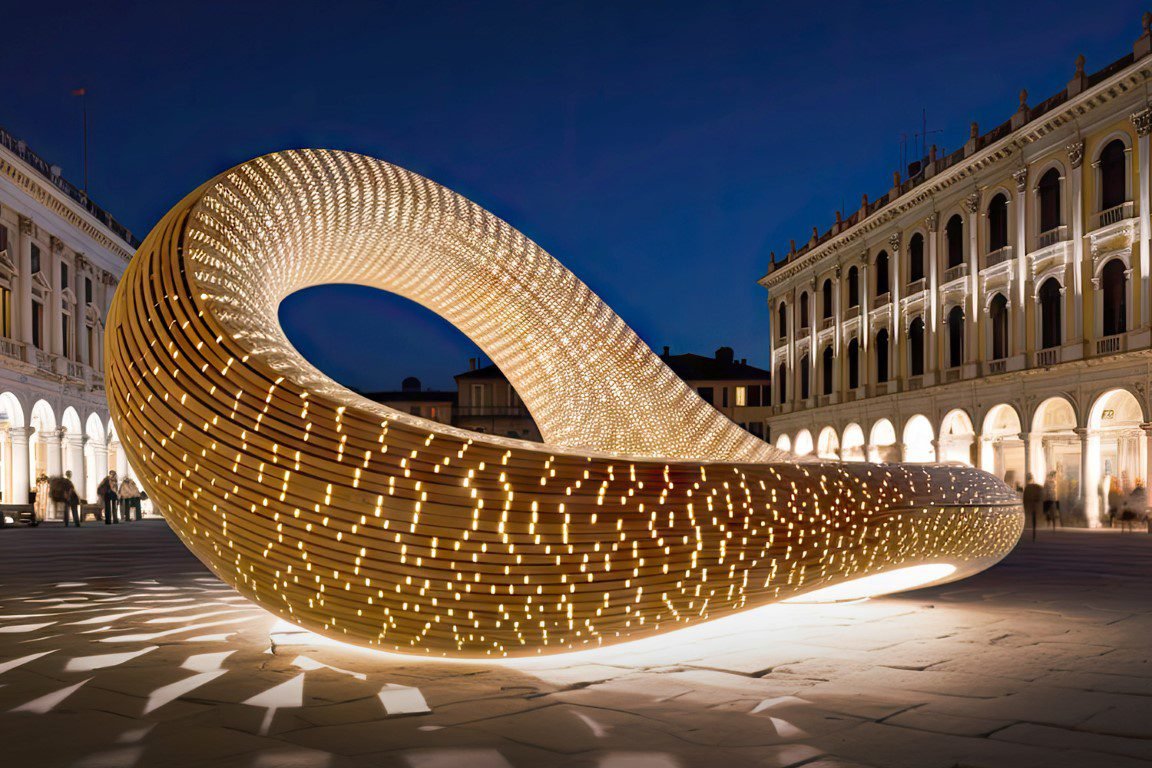
Choosing between architecture thesis topics is a big step for students since it’s the end of their education and a chance to show off their creativity and talents. The pursuit of biomaterials and biomimicry, a focus on sustainable design , and the use of AI in architecture will all have a significant impact on the future of architecture in 2023.
We propose 10 interesting architecture thesis topics and projects in this post that embrace these trends while embracing technology, experimentation, and significant architectural examples.
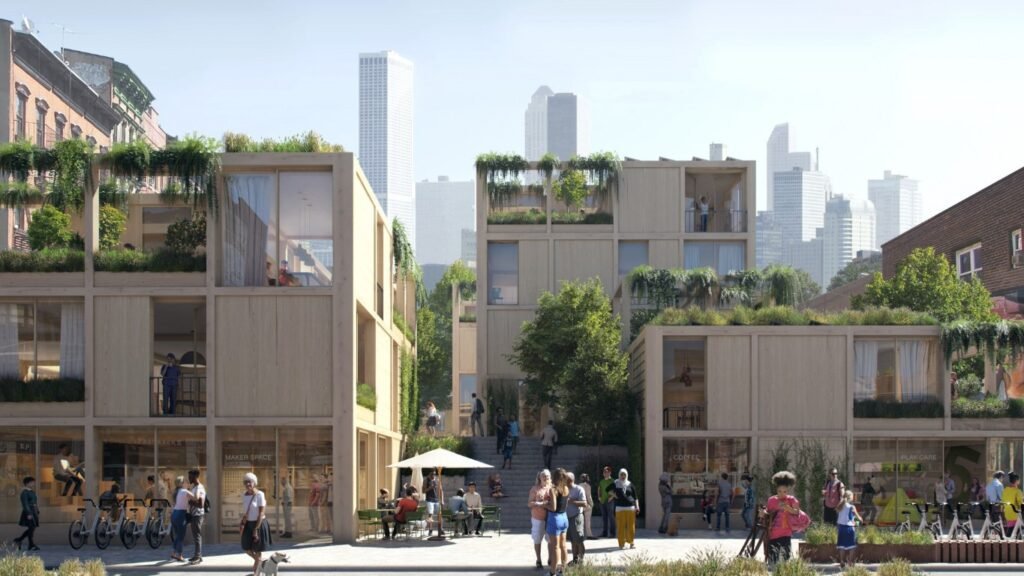
Architecture Thesis Topic #1 – Sustainable Affordable Housing
Project example: Urban Village Project is a new visionary model for developing affordable and livable homes for the many people living in cities around the world. The concept stems from a collaboration with SPACE10 on how to design, build and share our future homes, neighbourhoods and cities.
“Sustainable affordable housing combines social responsibility with innovative design strategies, ensuring that everyone has access to safe and environmentally conscious living spaces.” – John Doe, Sustainable Design Architect.

Architecture Thesis Topic #2 – Parametric Architecture Using Biomaterials
Project example: Parametric Lampchairs, using Agro-Waste by Vincent Callebaut Architectures The Massachusetts Institute of Technology’s (MIT) “Living Architecture Lab” investigates the fusion of biomaterials with parametric design to produce responsive and sustainable buildings. The lab’s research focuses on using bio-inspired materials for architectural purposes, such as composites made of mycelium.
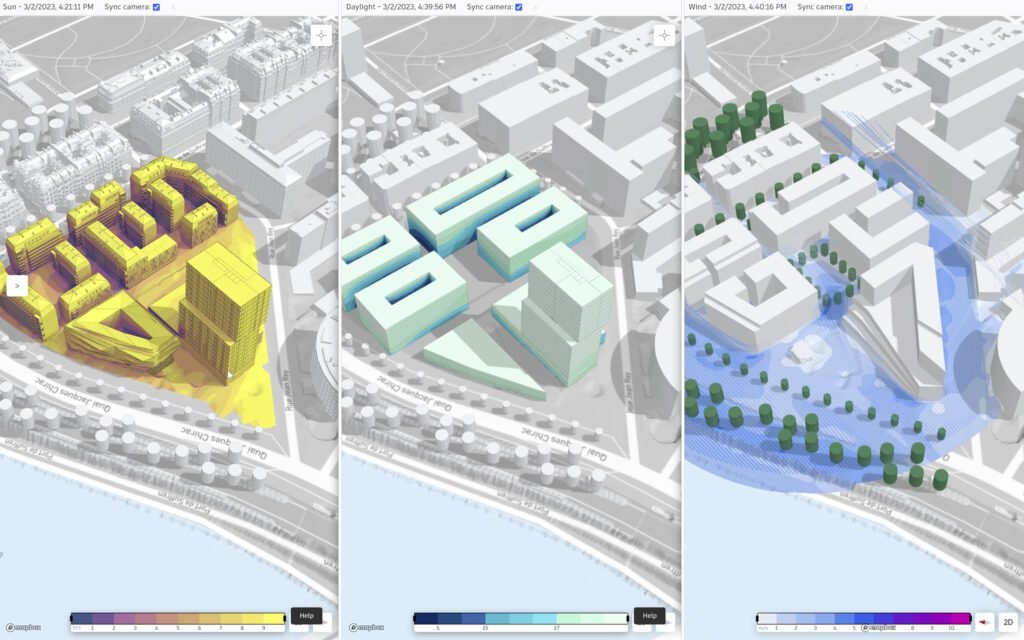
Architecture Thesis Topic #3 – Urban Planning Driven by AI
Project example: The University of California, Berkeley’s “ Smart City ” simulates and improves urban planning situations using AI algorithms. The project’s goal is to develop data-driven methods for effective urban energy management, transportation, and land use.
“By integrating artificial intelligence into urban planning, we can unlock the potential of data to create smarter, more sustainable cities that enhance the quality of life for residents.” – Jane Smith, Urban Planner.
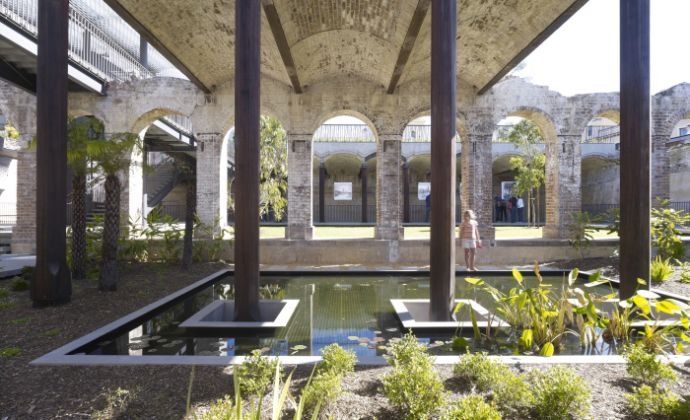
Architecture Thesis Topic #4 – Adaptive Reuse of Industrial Heritage
From 1866 to 1878, Oxford Street’s Paddington Reservoir was built. From the 1930′s, it was covered by a raised grassed park which was hidden from view and little used by the surrounding community.
Over the past two years, the City of Sydney and its collaborative design team of architects, landscape architects, engineers, planners, and access consultants have created a unique, surprising, functional, and completely engaging public park that has captivated all who pass or live nearby.
Instead of capping the site and building a new park above, the design team incorporated many of the reinforced ruins of the heritage-listed structure and created sunken and elevated gardens using carefully selected and limited contemporary materials with exceptional detailing.

Architecture Thesis Topic #5 – Smart and Resilient Cities
The capacity to absorb, recover from, and prepare for future shocks (economic, environmental, social, and institutional) is what makes a city resilient. Resilient cities have this capabilities. Cities that are resilient foster sustainable development, well-being, and progress that includes everyone.

Architecture Thesis Topic #6 – High Performing Green Buildings
The LEED certification offers a foundation for creating high-performing, sustainable structures. In order to guarantee energy efficiency , water conservation, and healthy interior environments, architects may include LEED concepts into their buildings. To learn more check our free training to becoming LEED accredited here .
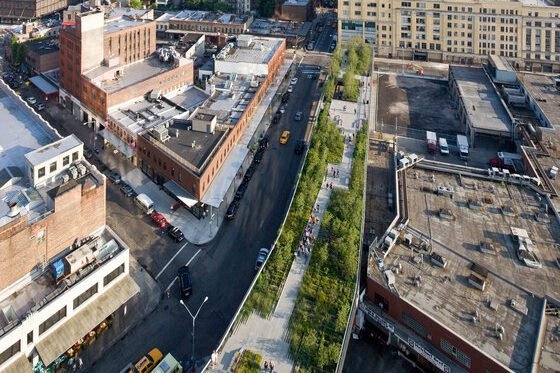
Architecture Thesis Topic #7 – Urban Landscapes with Biophilic Design
Project example: The High Line is an elevated linear park in New York City that stretches over 2.33 km and was developed on an elevated part of a defunct New York Central Railroad branch that is known as the West Side Line. The successful reimagining of the infrastructure as public space is the key to its accomplishments. The 4.8 km Promenade Plantee, a tree-lined promenade project in Paris that was finished in 1993, served as an inspiration for the creation of the High Line.
“Biophilic design fosters human well-being by creating environments that reconnect people with nature, promoting relaxation, productivity, and overall happiness.” – Sarah Johnson, Biophilic Design Consultant.

Architecture Thesis Topic #8 – Augmented and Virtual Reality in Architectural Visualization
An interactive experience that augments and superimposes a user’s real-world surroundings with computer-generated data. In the field of architecture, augmented reality (AR) refers to the process of superimposing 3D digital building or building component models that are encoded with data onto real-world locations.

Architecture Thesis Topic #9 – Sustainable Skyscrapers
There is even a master program called “Sustainable Mega-Buildings” in the UK , Cardiff dedicated to high-rise projects in relation to performance and sustainability. Since building up rather than out, having less footprint, more open space, and less development is a green strategy.
“Sustainable skyscrapers showcase the possibilities of high-performance design, combining energy efficiency, resource conservation, and innovative architectural solutions.” – David Lee, Sustainable Skyscraper Architect.

Architecture Thesis Topic #10 – Circular Economy in Construction
Project example: Building D(emountable) , a sustainable and fully demountable structure on the site of a historic, monumental building complex in the center of the Dutch city Delft. Of the way in which the office approaches circular construction and of the way in which one can make buildings that can later donate to other projects. Or even be reused elsewhere in their entirety.
“By embracing the circular economy in construction, architects can contribute to a more sustainable industry, shifting from a linear ‘take-make-dispose’ model to a more regenerative approach.” – Emily Thompson, Sustainable Construction Specialist.
Conclusion:
The 10 thesis projects for architecture discussed above demonstrate how AI, LEED , and sustainable design are all incorporated into architectural practice. Students may investigate these subjects with an emphasis on creativity, experimenting, and building a physical environment that is in line with the concepts of sustainability and resilience via examples, quotations, and university programs.
ACCESS YOUR FREE LEED & WELL RESOURCES
Become accredited in 2 weeks or less!
At archiroots, we bring you educational content from some of the greatest professionals in the field.Their talents, skill and experitise is exceptional. When we present expected timings and figures on our website, we are showcasing exceptional results. You should not rely as any kind of promise, guarantee, or expectation of any level of success. Your results will be determined by a number of factors over which we have no control, such as your experiences, skills, level of effort, education, changes within the market, and luck. Use of any information contained on this website is as at your own risk. We provide content without any express or implied warranties of any kind. By continuing to use our site and access our content, you agree that we are not responsible for any decision you may make regarding any information presented or as a result of purchasing any of our products or services.
© 2024 Archiroots · Privacy Policy · Terms & Conditions
Email questions to [email protected]
EARN YOUR TITLE IN 2 WEEKS!


20 Types of Architecture thesis topics

An architectural thesis is perhaps the most confusing for a student because of the range of typologies of buildings that exist. It also seems intimidating to pick your site program and do all the groundwork on your own. While choosing an architectural thesis topic, it is best to pick something that aligns with your passion and interest as well as one that is feasible. Out of the large range of options, here are 20 architectural thesis topics .
1. Slum Redevelopment (Urban architecture)
Slums are one of the rising problems in cities where overcrowding is pertinent. To account for this problem would be one of great value to the city as well as the inhabitants of the slum. It provides them with better sanitation and well-being and satisfies their needs.

2. Maggie Center (Healthcare architecture)
This particular typology of buildings was coined by a cancer patient, Margaret Keswick Jencks, who believed that cancer-treatment centres’ environment could largely improve their health and wellbeing by better design. This led a large number of starchitects to participate and build renowned maggie centres.

3. Urban Sprawl Redesign (Urban design)
The widening of city boundaries to accommodate migrants and overcrowding of cities is very common as of late. To design for the constant urban sprawl would make the city life more convenient and efficient for all its users.


4. Redesigning Spaces Under Elevated Roads and Metros (Urban infrastructure)
A lot of space tends to become dead space under metros or elevated roads. To use these spaces more efficiently and engage them with the public would make it an exciting thesis topic.

5. Urban Parks (Urban landscape)
Urban parks are not only green hubs for the city, which promotes the well-being of the city on a larger level, but they also act as great places for the congregation and bring a community together.

6. Reusing Abandoned Buildings (Adaptive reuse)
All buildings after a point become outdated and old but, what about the current old and abandoned buildings? The best way to respond to these is not by demolishing them; given the amount of effort it takes to do so, but to enhance them by restoring and changing the building to current times.

7. Farming in Cities (Green urban spaces)
With climate change and population on the rise, there is statistical proof that one needs to start providing farming in cities as there is not sufficient fertile land to provide for all. Therefore, this makes a great thesis topic for students to explore.

8. Jails (Civil architecture)
To humanize the function of jails, to make it a place of change and rehabilitation, and break from the stereotypical way of looking at jails. A space that will help society look at prisoners as more than monsters that harm, and as fellow humans that are there to change for everyone’s betterment.

9. Police Academies (Civil architecture)
Academies that train people to be authoritative and protective require spaces for training mentally and physically; focussing on the complexity of the academy and focussing on the user to enhance their experience would work in everyone’s favour.

10. High Court (Civil architecture)
Courtrooms are more often than not looked at as spaces that people fear, given the longevity of court cases. It can be a strenuous space; therefore, understanding the user groups’ state of mind and the problems faced can be solved using good design.

11. Disaster-resilient structures (Disaster-relief architecture)
Natural disasters are inevitable. Disaster-resilient structures are build suitably for the natural disasters of the region while also incorporating design into it, keeping in mind the climatic nature of the location.

12. Biophilic design (Nature-inspired architecture)
As humans, we have an innate love for nature, and the struggle between integrating nature and architecture is what biophilic design aims towards. To pick a topic where one would see minimal use of natural elements and incorporate biophilic design with it would be very beneficial.

13. Metro stations and Bus terminals (Transportation spaces)
Bus terminals and metro stations are highly functional spaces that often get crowded; and to account for the crowd and the problems that come with it, plus elevate the experience of waiting or moving, would contribute to making it a good thesis topic.

14. Airport design (Transportation spaces)
Airport designing is not very uncommon; however, it is a rather complex program to crack; thereby, choosing this topic provides you with the opportunity to make this space hassle-free and work out the most efficient way to make this conducive for all types of users.

15. Sports Complex (Community architecture)
If your passion lies in sports, this is a go-to option. Each sport is played differently, different materials are used, and the nature of the sport and its audience is rather complicated. However, to combine this and make it a cohesive environment for all kinds of users would make a good thesis topic.

16. Stadium (Community architecture)
Unlike a sports complex, one could also pick one sport and look at the finer details, create the setting, and experience for it; by designing it to curate a nice experience for the players, the public, and the management.

17. Waste-recycling center (Waste management)
Reducing waste is one of the most fundamental things we must do as humans. Spaces where recycling happens must be designed consciously. Just like any other space, it has been given importance over the years, and this would make a good thesis topic to provide the community with.

18. Crematorium (Public architecture)
Cremation of a loved one or anyone for that matter is always a rather painful process and a range of emotions is involved when it comes to this place. Keeping in mind the different types of people and emotions and making your thesis about this would mean to enhance this experience while still keeping the solemnity of it intact.

19. Museums (Community architecture)
Museums are spaces of learning, and the world has so much to offer that one could always come up with different typologies of museums and design according to the topic of one’s interest. Some of the examples would be cultural heritage, modern art, museum of senses, and many more.

20. Interpretation center (Community architecture)
An interpretation center is a type of museum located near a site of historical, cultural, or natural relevance that provides information about the place of interest through various mediums.

References:
- 2022. 68 Thesis topics in 5 minutes . [image] Available at: <https://www.youtube.com/watch?v=NczdOK7oe98&ab_channel=BlessedArch> [Accessed 1 March 2022].
- Bdcnetwork.com. 2022. Biophilic design: What is it? Why it matters? And how do we use it? | Building Design + Construction . [online] Available at: <https://www.bdcnetwork.com/blog/biophilic-design-what-it-why-it-matters-and-how-do-we-use-it> [Accessed 1 March 2022].
- RTF | Rethinking The Future. 2022. 20 Thesis topics related to Sustainable Architecture – RTF | Rethinking The Future . [online] Available at: <https://www.re-thinkingthefuture.com/rtf-fresh-perspectives/a1348-20-thesis-topics-related-to-sustainable-architecture/> [Accessed 1 March 2022].
- Wdassociation.org. 2022. A List Of Impressive Thesis Topic Ideas In Architecture . [online] Available at: <https://www.wdassociation.org/a-list-of-impressive-thesis-topic-ideas-in-architecture.aspx> [Accessed 1 March 2022].

Online Course – The Ultimate Architectural Thesis Guide
Apply Now – Online Course

Flora is a student of architecture, with a passion for psychology and philosophy. She loves merging her interests and drawing parallels to solve and understand design problems. As someone that values growth, she uses writing as a medium to share her learning and perspective.

5 Reasons why your design sheets fail to impress

Wangjing SOHO by Zaha Hadid Architects: Dancing Fans
Related posts.

Life of an Artist: Manjit Bawa

Life of an Artist: Hanif Kureshi

Ancient Cooling Techniques

Life of an Artist: N.K.P. Muthukoya

Life of an Artist: Jehangir Sabavala

The Impact of Affluent Lifestyles on Modern Architectural Trends
- Architectural Community
- Architectural Facts
- RTF Architectural Reviews
- Architectural styles
- City and Architecture
- Fun & Architecture
- History of Architecture
- Design Studio Portfolios
- Designing for typologies
- RTF Design Inspiration
- Architecture News
- Career Advice
- Case Studies
- Construction & Materials
- Covid and Architecture
- Interior Design
- Know Your Architects
- Landscape Architecture
- Materials & Construction
- Product Design
- RTF Fresh Perspectives
- Sustainable Architecture
- Top Architects
- Travel and Architecture
- Rethinking The Future Awards 2022
- RTF Awards 2021 | Results
- GADA 2021 | Results
- RTF Awards 2020 | Results
- ACD Awards 2020 | Results
- GADA 2019 | Results
- ACD Awards 2018 | Results
- GADA 2018 | Results
- RTF Awards 2017 | Results
- RTF Sustainability Awards 2017 | Results
- RTF Sustainability Awards 2016 | Results
- RTF Sustainability Awards 2015 | Results
- RTF Awards 2014 | Results
- RTF Architectural Visualization Competition 2020 – Results
- Architectural Photography Competition 2020 – Results
- Designer’s Days of Quarantine Contest – Results
- Urban Sketching Competition May 2020 – Results
- RTF Essay Writing Competition April 2020 – Results
- Architectural Photography Competition 2019 – Finalists
- The Ultimate Thesis Guide
- Introduction to Landscape Architecture
- Perfect Guide to Architecting Your Career
- How to Design Architecture Portfolio
- How to Design Streets
- Introduction to Urban Design
- Introduction to Product Design
- Complete Guide to Dissertation Writing
- Introduction to Skyscraper Design
- Educational
- Hospitality
- Institutional
- Office Buildings
- Public Building
- Residential
- Sports & Recreation
- Temporary Structure
- Commercial Interior Design
- Corporate Interior Design
- Healthcare Interior Design
- Hospitality Interior Design
- Residential Interior Design
- Sustainability
- Transportation
- Urban Design
- Host your Course with RTF
- Architectural Writing Training Programme | WFH
- Editorial Internship | In-office
- Graphic Design Internship
- Research Internship | WFH
- Research Internship | New Delhi
- RTF | About RTF
- Submit Your Story
- DSpace@MIT Home
- MIT Libraries
- Graduate Theses
Sustainability in architecture
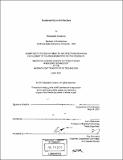
Other Contributors
Terms of use, description, date issued, collections.
Show Statistical Information
Creative Sustainability Architecture theses
The following is a list of thesis works completed by the graduates of the Creative Sustainability Master’s Programme in the Department of Architecture:
| Name | Topic | Link |
|---|---|---|
| Zhang, Yu | Temporary Lodging for Cancer Patients in China - patient centred approach inspired by philosophy of Maggie's Centers |
| Name | Topic | Link |
|---|---|---|
| Sveisbergs, Kristaps | Application of the Active House design principles on Finnish multistorey apartment building | |
| Boris, Alina | Sustainable adaptive reuse of a ruined industrial building in St. Petersburg: Pigment Factory | |
| German Blanco, Belen | Pavilion of Possibilities. An architectural journey to create stages for social inclusion |
| Name | Topic | Link |
|---|---|---|
| Esquivel Velázquez, Andrea Alejandra | First we took the streets. Urban storytelling for alternative futures | |
| Hernandez Gazga, Salvador | La Loma Larga: Rethinking an inner-city edge in Monterrey, Mexico | |
| Kintsurashvili, Anna | Traversing Modernist Memory - Investigating, Documenting and Representing Cultural Heritage Values and Public Memory of Uganda National Cultural Centre and Theatre | |
| Palarie, Dan | Understanding Sustainability in Finland. Local environmentalism and potential for sustainable architecture | |
| Viriyaroj, Bergpob | Thai contemporary timber construction system | |
| Yao, Yuchen | Shareable Life: Design of co-housing for promoting community living in Helsinki |
| Name | Topic | Link |
|---|---|---|
| Fotouhi, Fahimeh | Performative Building Envelopes, State of the Art and Future Potentials | |
| Kang, Kwangsun | Wings of Hakaniemi | |
| Mellberg, Caroline | The building as a whole – A journey to reflect the concept of sustainable building | |
| Wang, Yuchan | Architecture for bidding farewell to life – A hospice for cancer patients in China | |
| Youn, Byungmin | Living Together / Threshold: Spaces between and public realm in cohousing |
| Name | Topic | Link |
|---|---|---|
| Huang, Xing | Reinterpretation of arcade typology in a contemporary way | |
| Jevtic, Dragan | Well Being Centre for Immigrant Population of Helsinki | |
| Moinel, Caroline | Farming the city. Creating opportunities for urban agriculture in Helsinki. How can architects engage? |
| Name | Topic | Link |
|---|---|---|
| Airaksinen, Olga Maria | Itkonniemen ranta muutoksessa – teollisuusalueesta eläväksi kaupunginosaksi (Itkonniemi waterfront, transformation of an industrial area to a lively neighbourhood; in Finnish) | |
| Na, Byoungkuk | Restorative ordinary life |
| Name | Topic | Link |
|---|---|---|
| Arjanko, Timo Paavo Tapio | Dwellings Promoting Sustainable Lifestyles in Vartiosaari | |
| Floret, Zita | Architecture meets sanitation – Intervening in community-led sanitation improvemnts in an informal settlement of Dar es Salaam, Tanzania | |
| Heiskanen, Sassi Asta Johanna | Urban Play – daily leisure playspots for youth promoting spontaneous physical activity | |
| Rinne, Niina Martina | Home 2040 – A Vision for Vartiosaari |
| Name | Topic | Link |
|---|---|---|
| Abdo Duran, Maria Gabriela | A Grid for Sustainability | |
| Andretti, Elisa | Otaniemi Walks | not available |
| Ni Mhorain, Niamh | Drawing out everyday expertise: Expanded role of architect in renovation of apartment buildings | not available |
| Ryu, Haeyeon | Sustainable building refurbishment : process based approaches with the Hotel Klaus K refurbishment case |
Access all Creative Sustainability Thesis Works
- Published: 15.5.2020
- Updated: 9.4.2022

IMAGES
VIDEO
COMMENTS
Here are 20 Thesis topics for architecture related to Sustainable Architecture: 1. Urban Park | Thesis Topics for Architecture. To make a city livable and sustainable, urban parks play a key role to provide a healthy lifestyle for the residents of the city.
Discover how to craft a winning sustainable architecture thesis with expert tips, topic ideas, and research strategies to make a meaningful impact on the environment.
We propose 10 interesting architecture thesis topics and projects in this post that embrace these trends while embracing ...
How to understand the concept of GREEN in an architectural perspective is the aim of my thesis. Aside from the basic concepts of sustainable building design, such as climate responsive layout, natural systems from daylight to fresh air providing a superior environment for the occupants as well as a better long-term
The thesis looks at historical and current Khumbu building practice. It examines their sustainability and then seeks to identify both simple affordable improvements that can be implemented...
While choosing an architectural thesis topic, it is best to pick something that aligns with your passion and interest as well as one that is feasible. Out of the large range of options, here are 20 architectural thesis topics .
Green building development involves an integrated approach where building professionals collaborate closely on achieving sustainable goals and better efficiency in building projects.
This thesis defines sustainability as it applies to architecture, compares environmental performance rating systems and guidelines, discusses simulation, design, and life cycle analysis tools, outlines specific green building strategies, devises a methodology for prioritization, and summarizes design and construction procedures that incorporate ...
As a discretion to a new approach to green architecture, an eco-effective regenerative building would not only restore and improve the environment by using renewable sources to generate...
Collection of Creative Sustainability Master's thesis works from the field of architecture at Aalto. The following is a list of thesis works completed by the graduates of the Creative Sustainability Master’s Programme in the Department of Architecture: